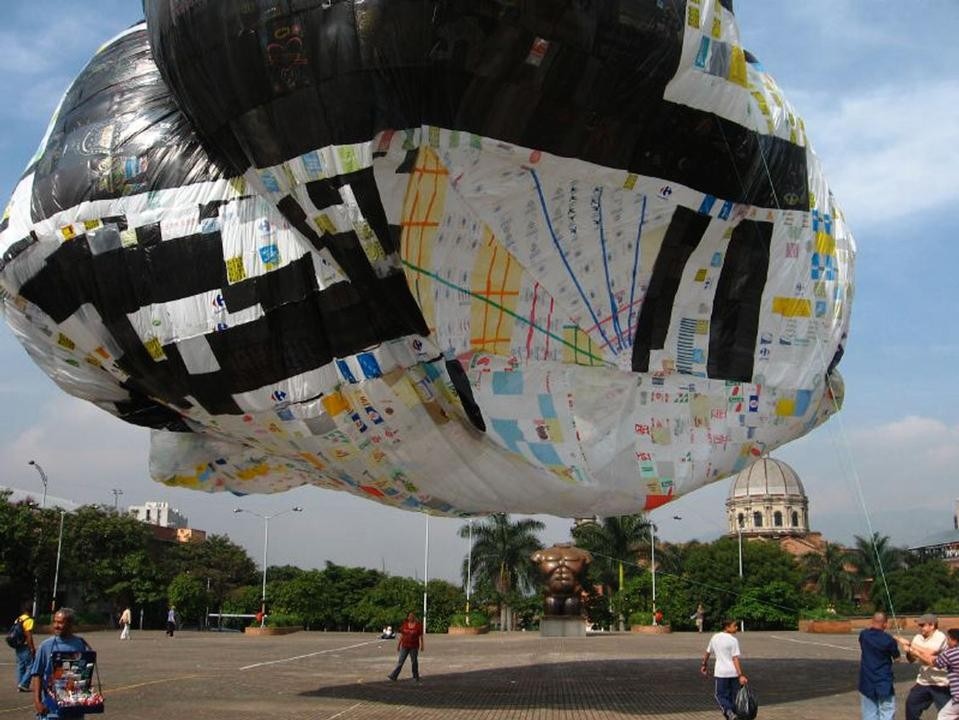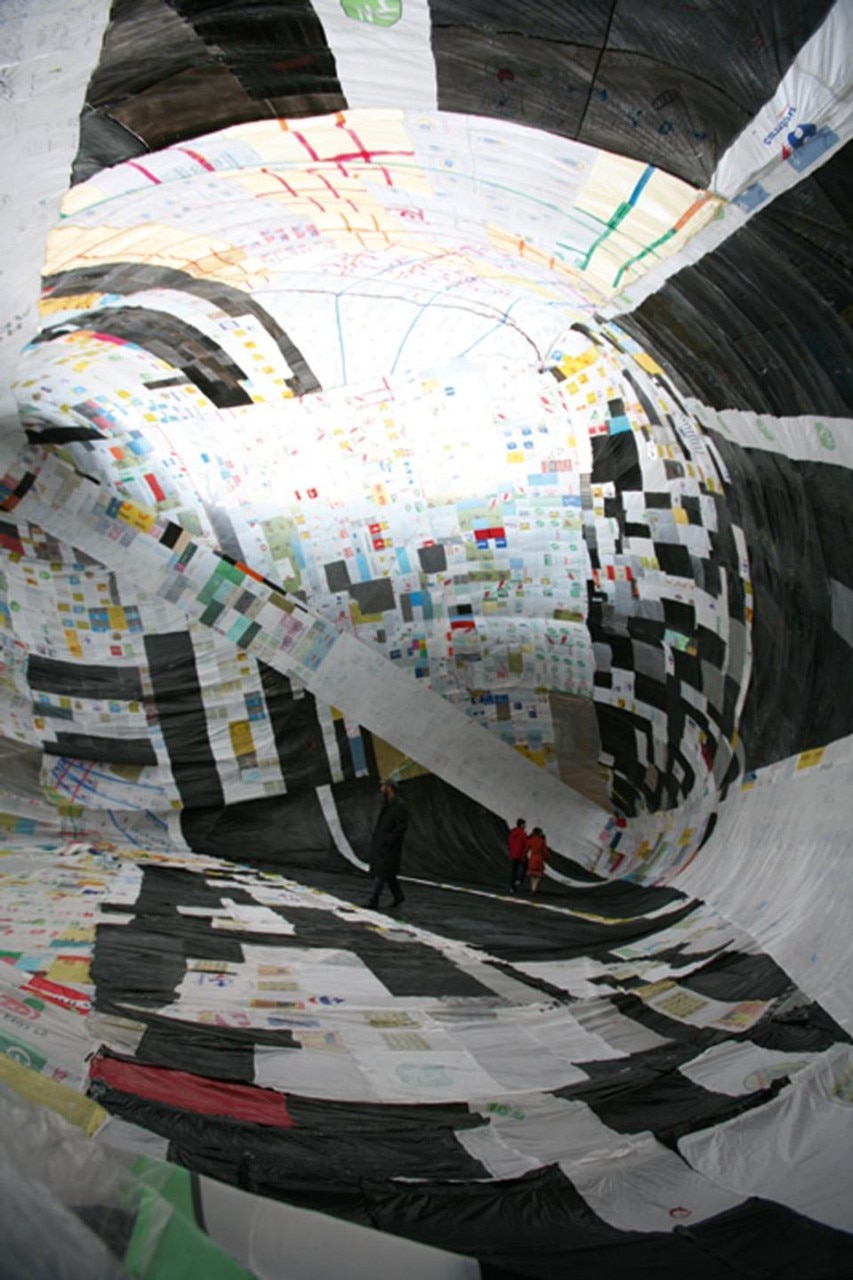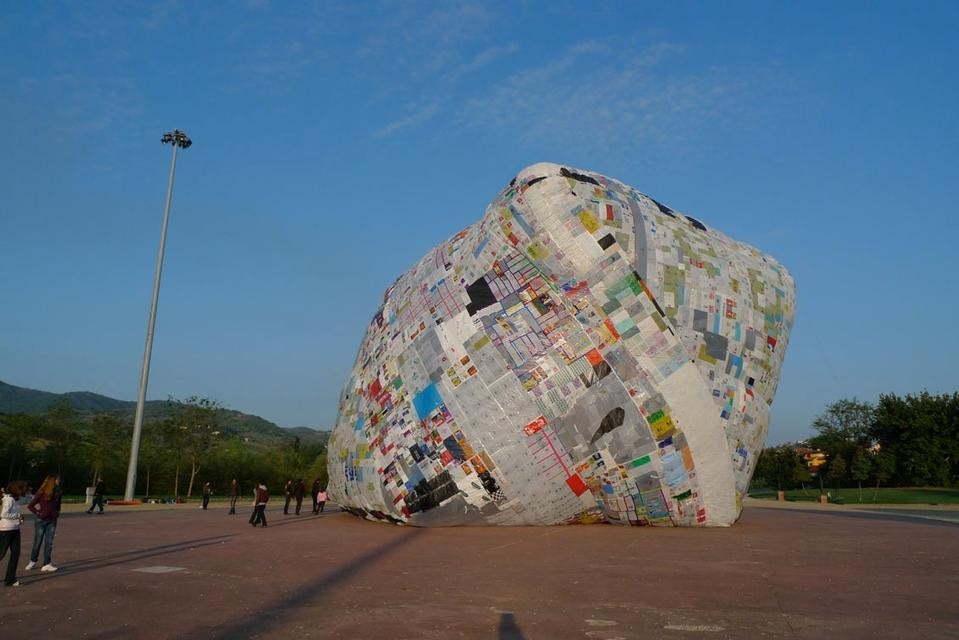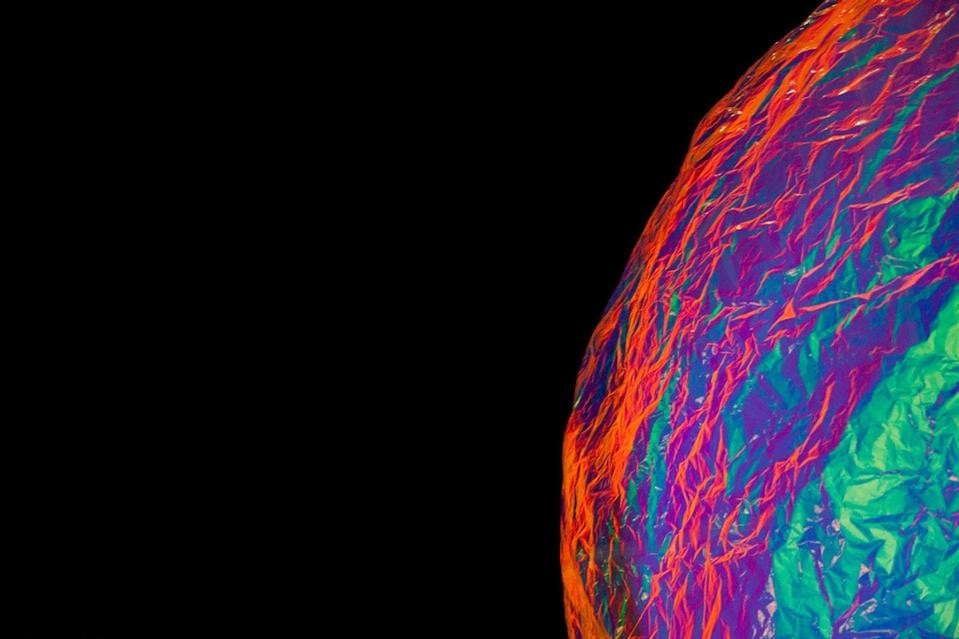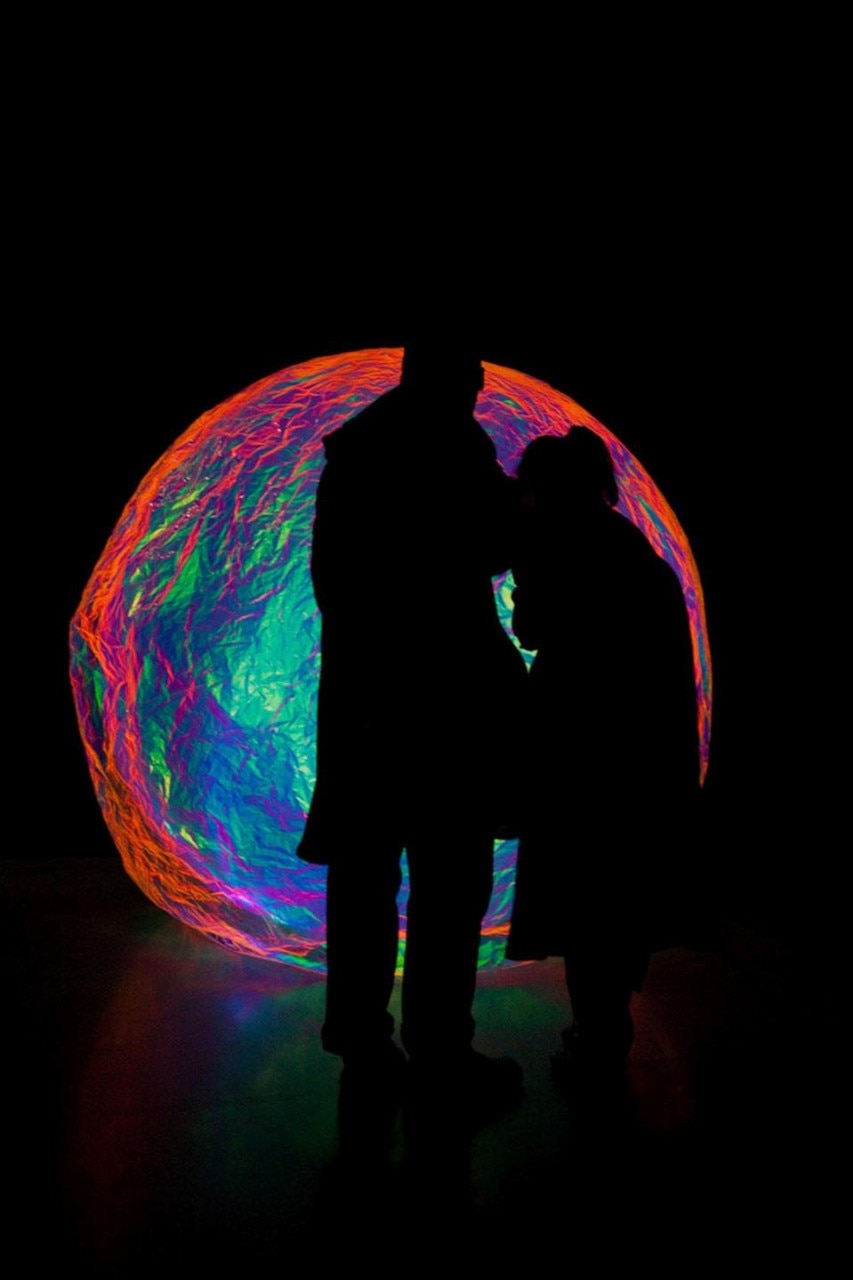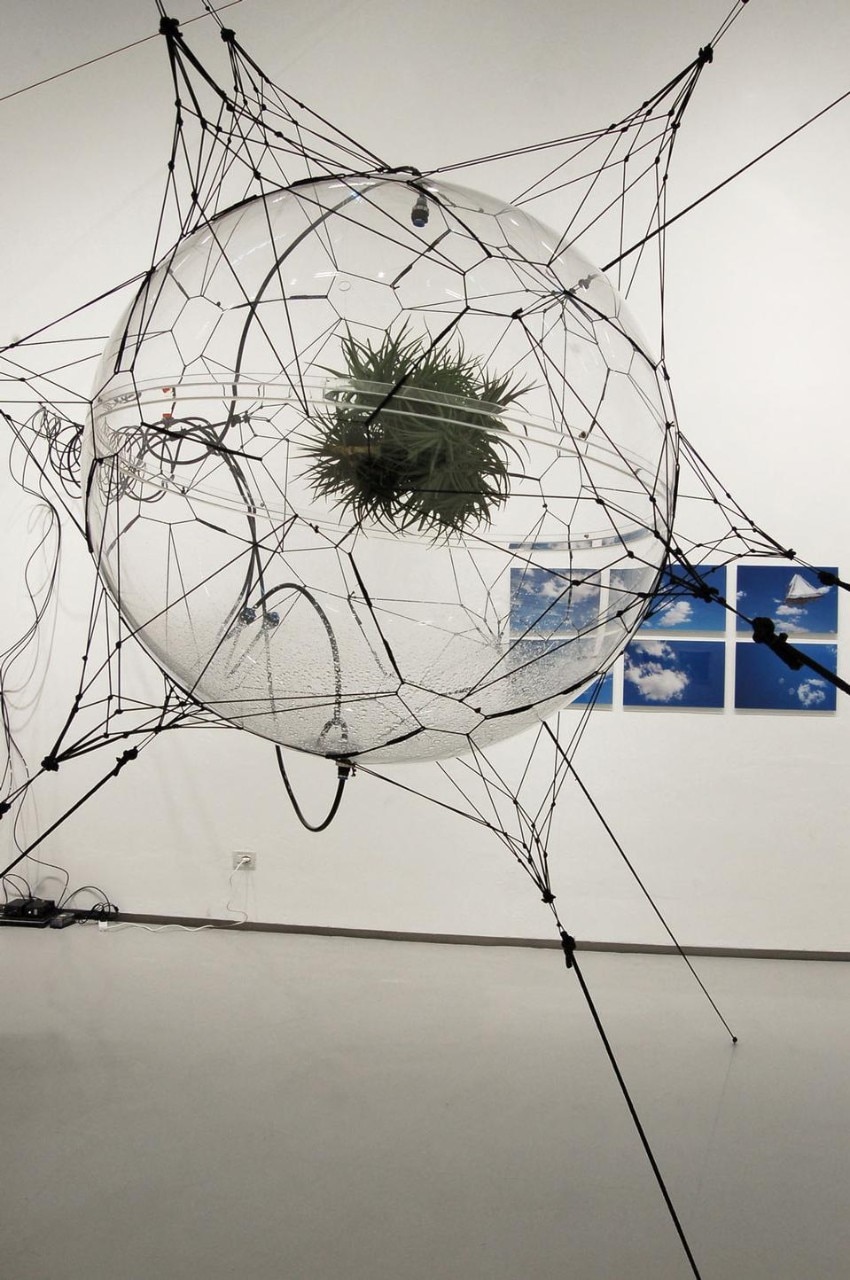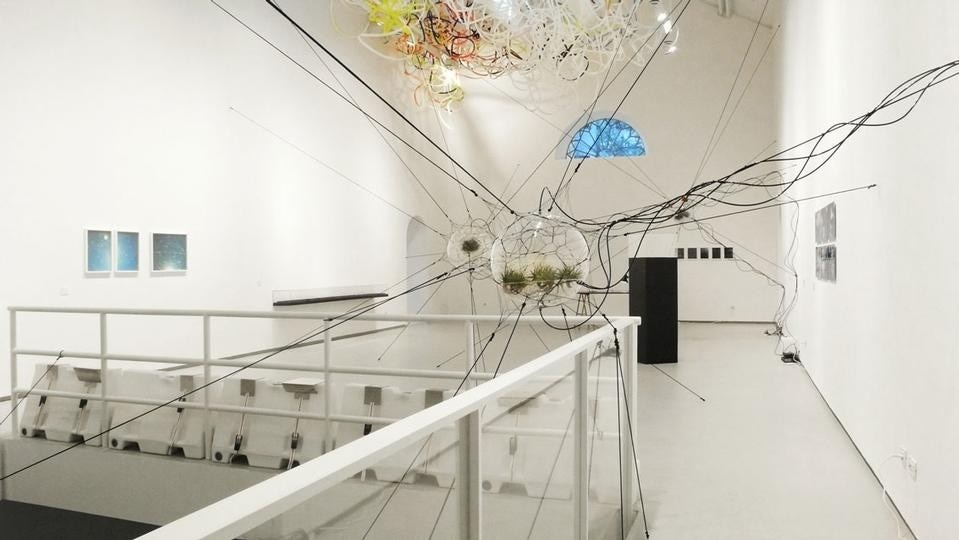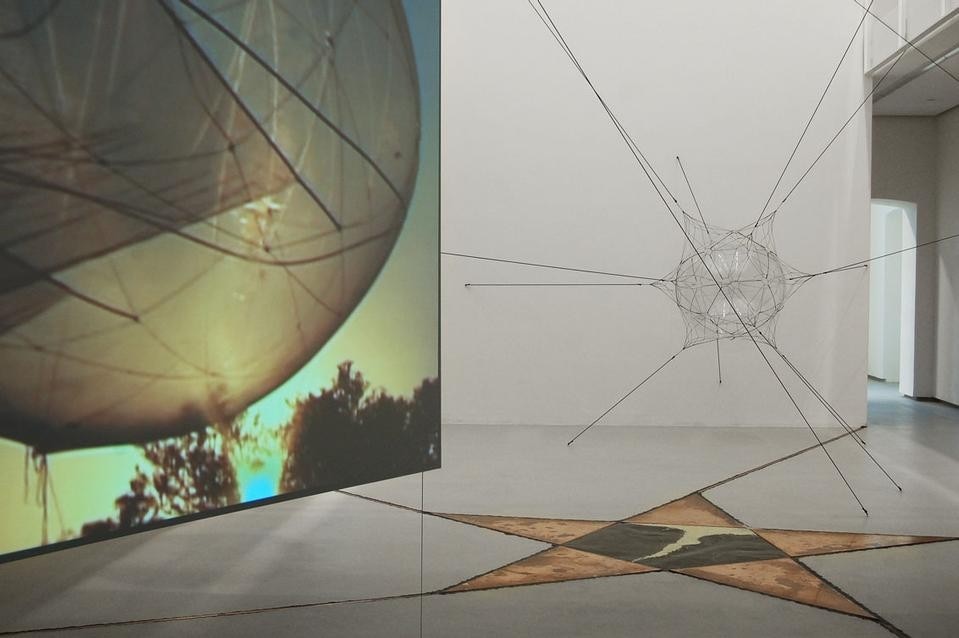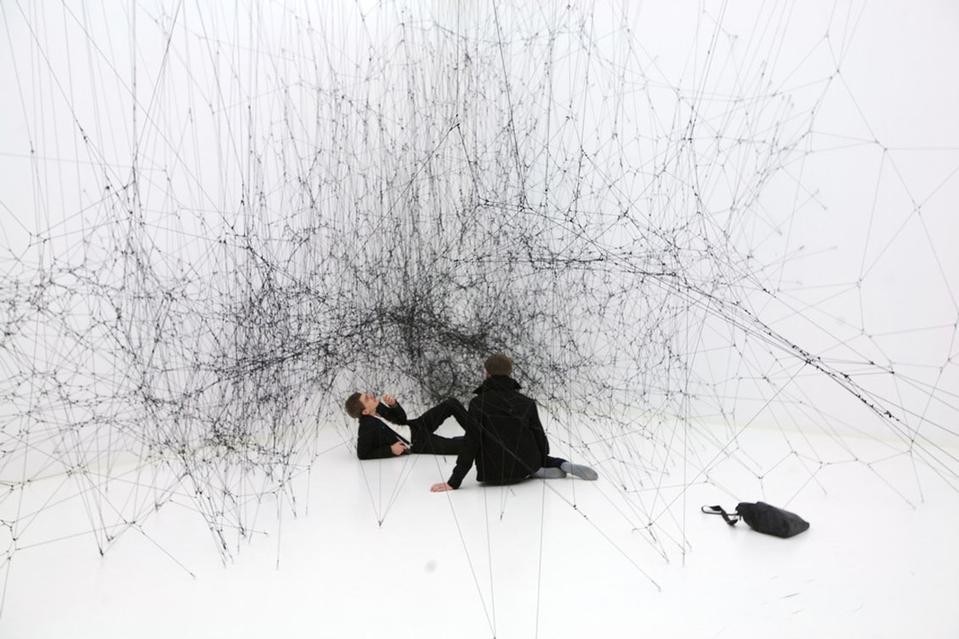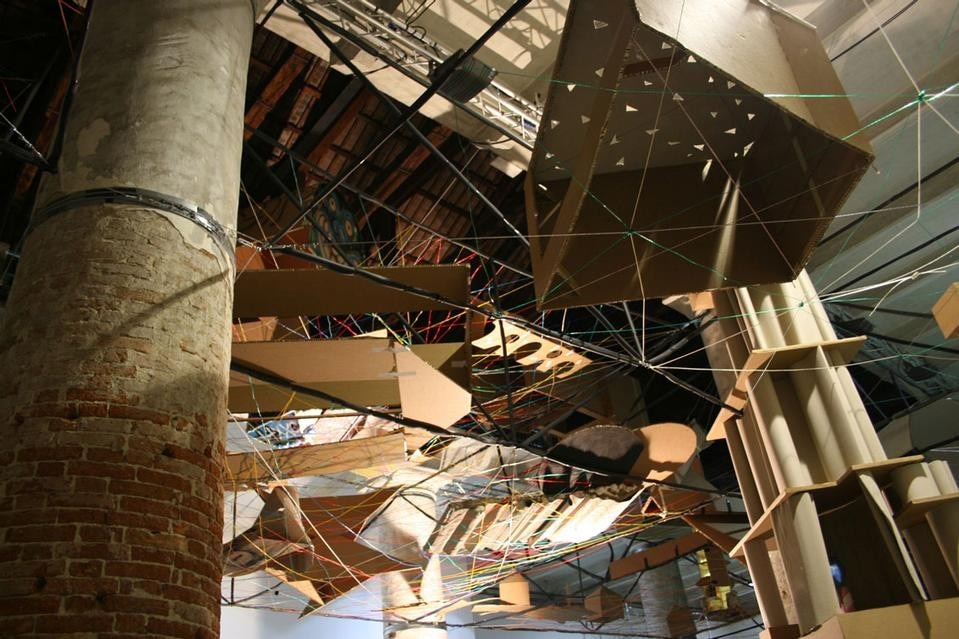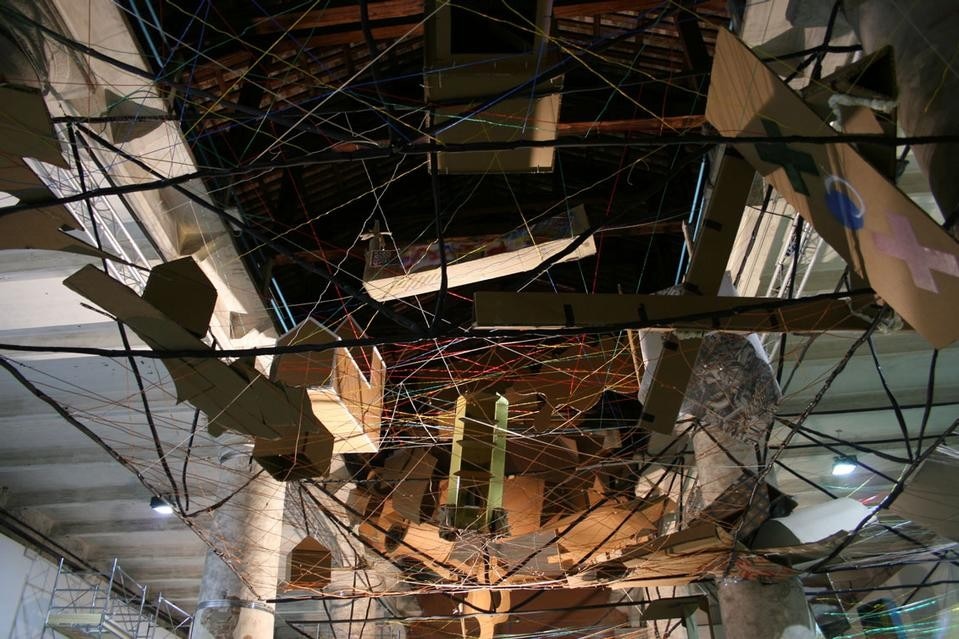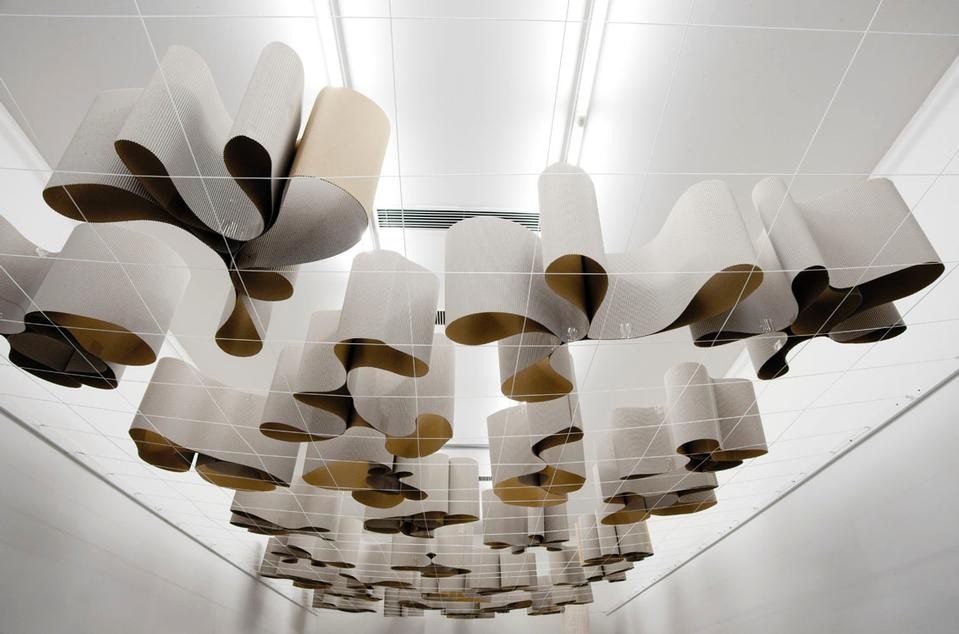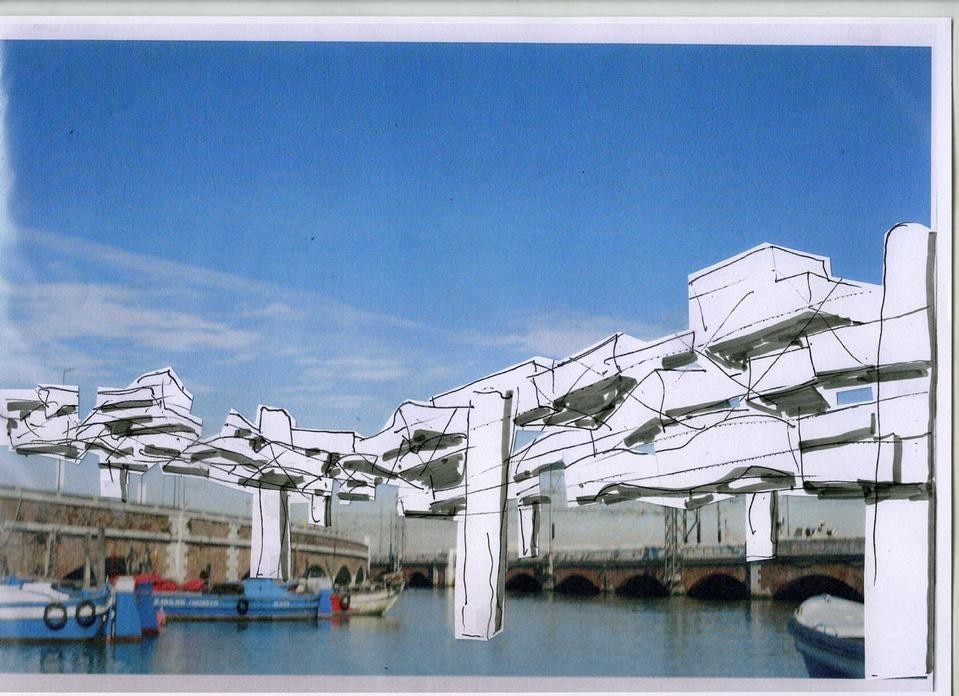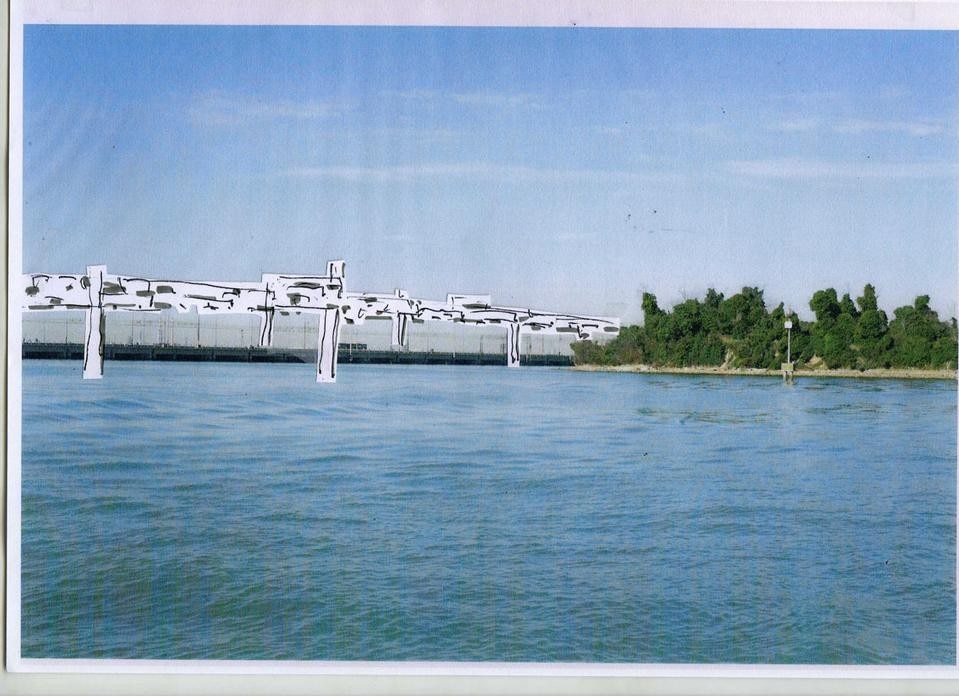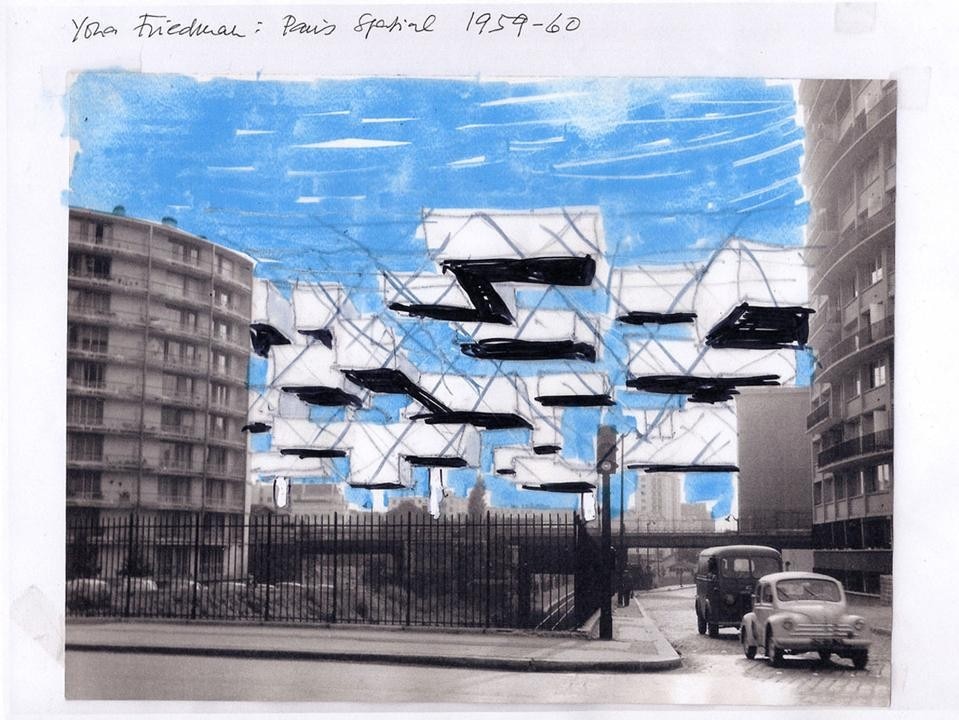Yona Friedman: I've already published some works about climate change. The most recent one is very funny because it's written in the form of a joke, a pseudo-interview with my dog and cat. They say things like: "You humans are making everything as stupid as possible because you want to adapt the world to you, whereas we are adapting ourselves to the world." We managed to live with a changing climate for thousands of years. Why not now? The easiest thing is to let it go. It only has to be understood politically, because technically why shouldn't we follow the climate? For example, by mass migration, if necessary. I don't think it is very ambitious. The way we are feeding ourselves and our lifestyle is the real reason behind climate change. Let the world redevelop in its own way and change your lives.
Tomás Saraceno: I like to think about climate change in relation to survival strategies in the natural world: hibernation, reproduction, mutation, etc. I think that we humans should be understood as part of the natural world, and today, between us, we could help to change the predominant climate of being in a pessimistic hibernation attitude. Just turning off the bulb and going to sleep won't do much. I think the bulb of the imagination should be on more than ever. Hopefully, we could change the climate to a more imaginative one, towards alternative futures with a positive happiness and joy. Your idea behind the Ville Spatiale is to liberate the Earth's surface so that food can then be produced inside the city.
YF: In the Ville Spatiale food-growing was a city occupation. In shantytowns, for example, people grow their own food.
TS: Someone recently developed a project called Vertical Farming in which agriculture is practised on each level of the buildings. And I am also thinking of flying gardens and farming.
YF: This is an important point. Architecture has never been interested in this aspect, so I'm very glad Tomás shares my interested in this issue.
MB: Tomás has done a lot of work about ecological questions.
YF: For me ecology is not about politics, and I know that Ville Spatiale has to do with ecology.
TS: In one of his books, Félix Guattari talks of "Three Ecology": social, mental and environmental.
YF: I think everything depends on our lifestyle. Lifestyle is an idea, a state of mind. We have to adapt our lifestyle regarding heating, air conditioning, whatever, and it is a slow process. What you call your "inhabited perimeter" is only a very small part of the space you use, and it is always characterised by a piece of equipment – a table, a chair, a bathroom, a kitchen – and all of these elements can be put into boxes of four metres squared. These big furnishings, equipment or spatial conditions mean the volume that needs to be heated can be reduced to just five per cent of the total.
We treat an apartment's equipment like a model and make it life-sized. People can thus modify the space as they want. You should only heat the spaces you effectively use. Using less energy is not simply economic; it also increases independence.
TS: I was really inspired by your books, and by Bernard Rudofsky's Architecture Without Architects. In these terms I like to think of a house or a space that is so light it is able to fly and travel as solar energy increases the interior temperature. The temperature is defined by the relationship with the environment, and its users define the altitude and possibility of displacement.
MB: These are the conditions of the biological landscape.
YF: Another point is that we have sophisticated technology but we don't know how to handle it. That's why I prefer simple materials, in the same way that you could use presophisticated technology before.
After all, you may be able to handle a computer, but do you know how to repair it?
You can't really write a software program by yourself. The computer is already assembled, so you can't use it differently. In the old technology you would get a piece of paper on which you could write in any language. With new technology people insist that you write in English and you can't write Swahili. It's a limitation of the computer.
TS: Something is changing now with this idea of "cloud computing". The program is constantly updating and changing according to the user. There are always open source codes where people can have access to the software and change it.
TS: I really like the big idea you have about this Megastructure situation that can also propose a new way of how we could live. But also the capability of customising the user interaction which allows us to change. I'm now thinking of how we are able to move towards a digital work that makes a link to a more physical work. Not only social meetings like Facebook, Twitter, email and all of that, but also how technology can help us to change the way we live and build architecture in a more concrete way. One day we'll have inhabitable cumulus clouds – which are spread out – inspiring a very organic architecture that changes according to the inhabitants' wishes and climate change. This project is very much inspired by your Graffiti Museum.
MB: The Ville Spatiale – as architecture by Yona – and the Cloud City – as an aerial architectural model for a different way of living, travelling and communicating by Tomás – are in some way connected. Both of you agree about the necessity to bring the computer's abstract dimension closer to the real world.
TS: Another project I'm working on with a collective of different people is a flying museum. It flies with just solar energy and is built with the participation of people (see www. Museoaerosolar.org). For the museum, people could reuse plastic bags they have at home and tape them all together to construct an enormous foil, eventually creating a big solar balloon in constant expansion. With the Museo Aerosolar we set up a collaboration between people that is always different in each place. This museum as a symbol for future "architecture" will help to reshape our lifestyle, a direct relation between the weight of your goods and the ability to lift them up into the sky. A close relation to the environment might be needed, a deeper knowledge of the environment around you, forcing a new synergy between socio-political geography and environmental states.
YF: People don't often realise that shop windows represent the biggest museum in the world. In that sense, the idea of the museum as a building, or an institution, is completely false. It's exactly the reverse of architecture. A museum is a "path" (un parcours) and it is better if it is general, so you can choose your particular path.
TS: The Museum Aerosolar is a collaborative process, usually being invited by institutions, local associations and neighbourhoods to travel to different countries. It is an engaging process that triggers the imagination as a process, and it is therefore about constructing an experience. The shop name written on a bag from one country is a new, unknown name in another country, or at a distance just a pixel of colour as it sails the wind up in the air.
YF: My museum doesn't fly, but you walk past it, which is a technology that has existed far longer than even archaeology can go back. You propose an object and it speaks in pictures. So I did the Museum of Simple Technology in Madras and the Street Museum in Como, where you have just boxes and you don't need to make a building. My idea of the museum is pedestrian. People today are so technologically minded that they forget the pedestrian. I am trying to disconnect myself completely from technology, because the risk is that you don't think but just look at the screen.
TS: I'd like to elaborate on the idea for a project in the sky. Let me show you some images of the Salt Lake in Bolivia. It's an incredible place. During the rainy season the sky reflects on the lake's surface in a way that totally blurs the sky and lake. It seems a kind of seamless environment. I thought about it and took inspiration from the clouds for a future architecture and how it can be classified.
For me the important question is about how the clouds could be a house, a city or a continent, and how they can aggregate from one to another. How could these modules join and be connected together?
YF: I am interested in improvisation. I believe that improvisation largely underlies everything that has brought about our civilisation. The bad thing that I see in sophisticated technology is that you cannot really improvise. I'd like if you put that forward. You shouldn't have modules but irregulars forms, without rules.
TS: Like the clouds, there is no real geometry in this shape, but it is organic. It can change and adapt as it grows. In that sense it can be much freer. Indeed, the cloud generates many different shapes, and this is how the flying city is achieved. When the clouds reach the city, they change shape according to the temperature of the city. There's an interaction and, in some way, clouds are very site specific. There are clouds you never see in Paris.
YF: The question of undecided geometry is particularly interesting. In a "space-chain" structure, a ring substitutes the triangle on one side and a square on the other, but it could also be a hexagon. If you move from one grid pattern to another, it doesn't determine its neighbour.
TS: What do you think about trying to imagine the structure you did as floating in the air?
YF: Sure. I like this idea.
TS: Super! When I look at your kind of configuration I have the idea that it should be floating in the air more freely.
YF: I think there is an aesthetic quality. Aesthetics, as a species characteristic, is very human. I don't know what aesthetics is and you cannot have any rules for it. I think rules are emotions as well. In mathematics, too, there are so many emotional elements. For that reason I'm much more interested in the process than the result.
TS: I said the same thing regarding the Museo Aerosolar. The importance doesn't lie so much in the object itself as in art's capability to imagine something about how we may be able to live.
YF: I think I'm lucky because I can do experiments. For example, in The Hague people agreed on the area that the city wants to redesign. They did research with a simple plexiglas model.
We did use aerial photographs, but people from the area came there. One day they were working by themselves simply following my indications. I don't know exactly how long this would go on, but they did it for two months, every week. They recorded the process.
TS: I really love this attitude of collaboration. We were doing an exhibition where people could build their own clouds. As we mentioned before about vertical gardening, I wonder why we can't do a flying garden, or a flying farm or a flying museum.
YF: Yes, it was similar to what I was doing with Daniel Birnbaum's students at the Venice Biennale.
TS: I'd like to develop a collaboration with you, a platform on the Internet which could move the digital community towards the idea that they could not only build blogs and chats, but also inspire people with the notion that we could start to build a new aerial land, a flying architecture that forms a new layer to existing cities. We could also join forces to build something physically, that we can put flying in the sky.
YF: What you can touch is reality and for people the reality is to push a chair – that's a reality. To make a drawing on paper is abstract. That's why I was telling people to bring objects they want to expose.
TS: Each reality is a product of the imagination; there is no reality. As Freud said, the real world is a symbolic interpretation.
MB: I think you should start from an alternative platform of a collective idea and try to realise it concretely.
TS: I would like people to take over this idea and start to build. Making things fly is very easy if we take simple plastic bags. If we talk about a permanent structure I think in terms of modules. People could later think about the interior and design it. My contribution is to use inflatable modules rather than rigid structures. You would still be able to have semirigid structures or very flexible ones by simply changing the pressure you place into the structure. When the air and its pressure and temperature are the real material, then each module has it own elastic web that allows any module of any size to be joined together, making partof this elastic web-cloud flying city where people could live inside each of these flying modules. I'd like to do that using some of your structures and make it fly.
YF: Sure. I'll send you some more material.
TS: Some ideas are perhaps coming together between irregular structures and my idea of putting a city in the clouds. We could merge them together and renew people's imagination. We could activate processes over the Internet. It is something in the air, and these things can be connected, sprinkling new ideas around.
YF: Okay, we can start on it, but please don't over-plan. Leave it to the people themselves.
TS: I'll start thinking, imagining and fine-tuning the right tools. Then later the things will take over the idea. We have to decide how much we want to say without revealing everything. We have to tune the right tools so that later the things can be left to move alone... imagination, passion, curiosity…
YF: Indeed, that was our conversation. But, as always happens with audio recordings, a large part of the content gets lost. When talking, I used to show drawings or objects. I also have my mimics and gestures and my personal way of diction. None of that is visible in a printed text.
